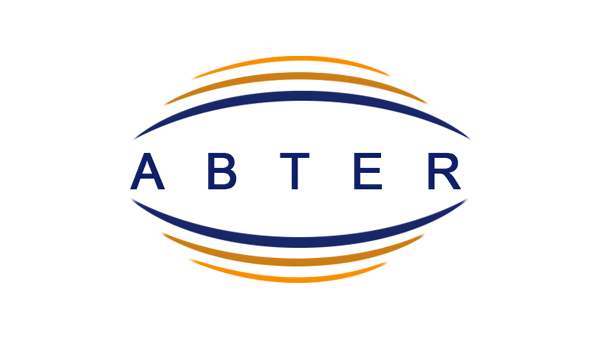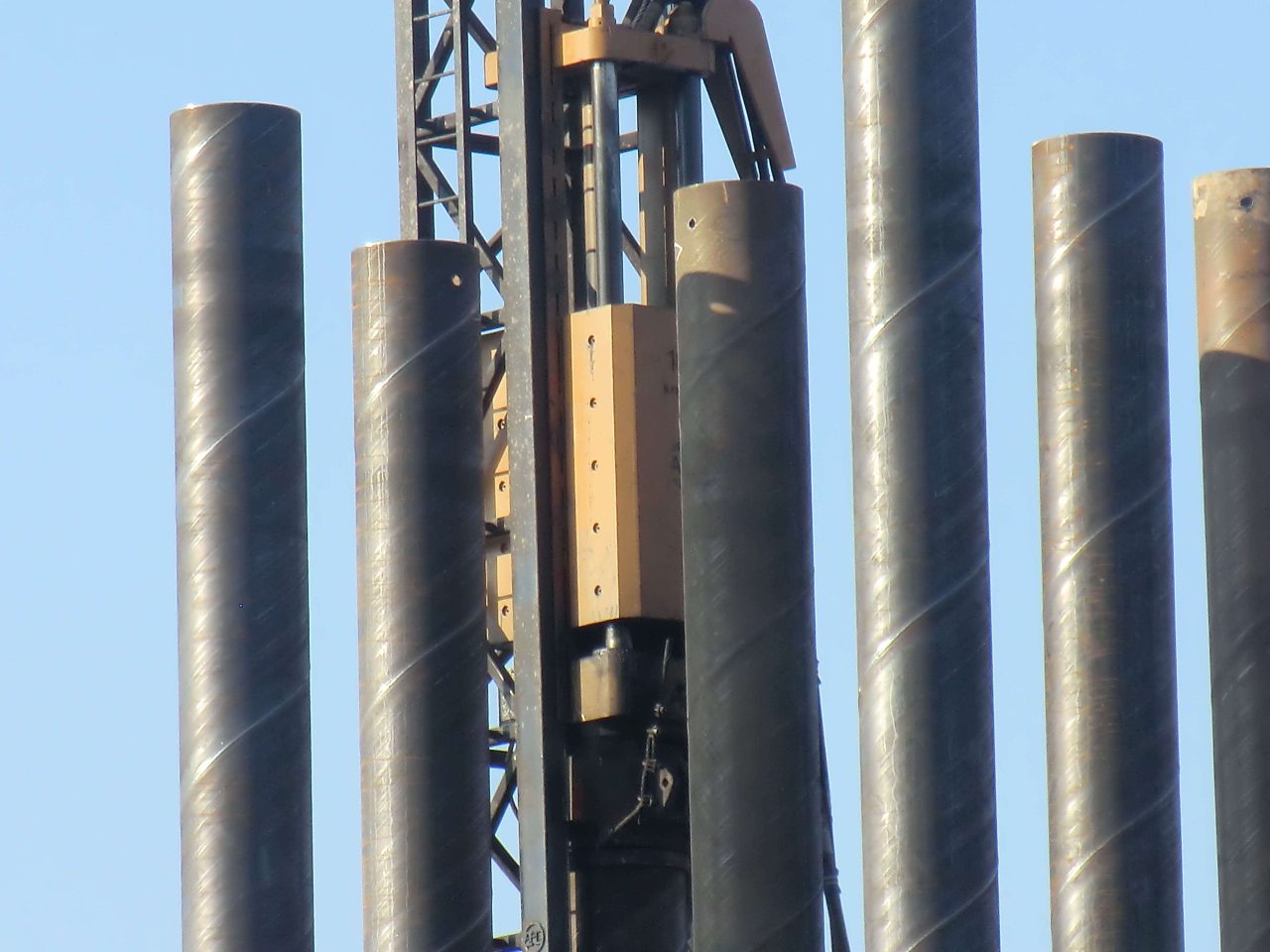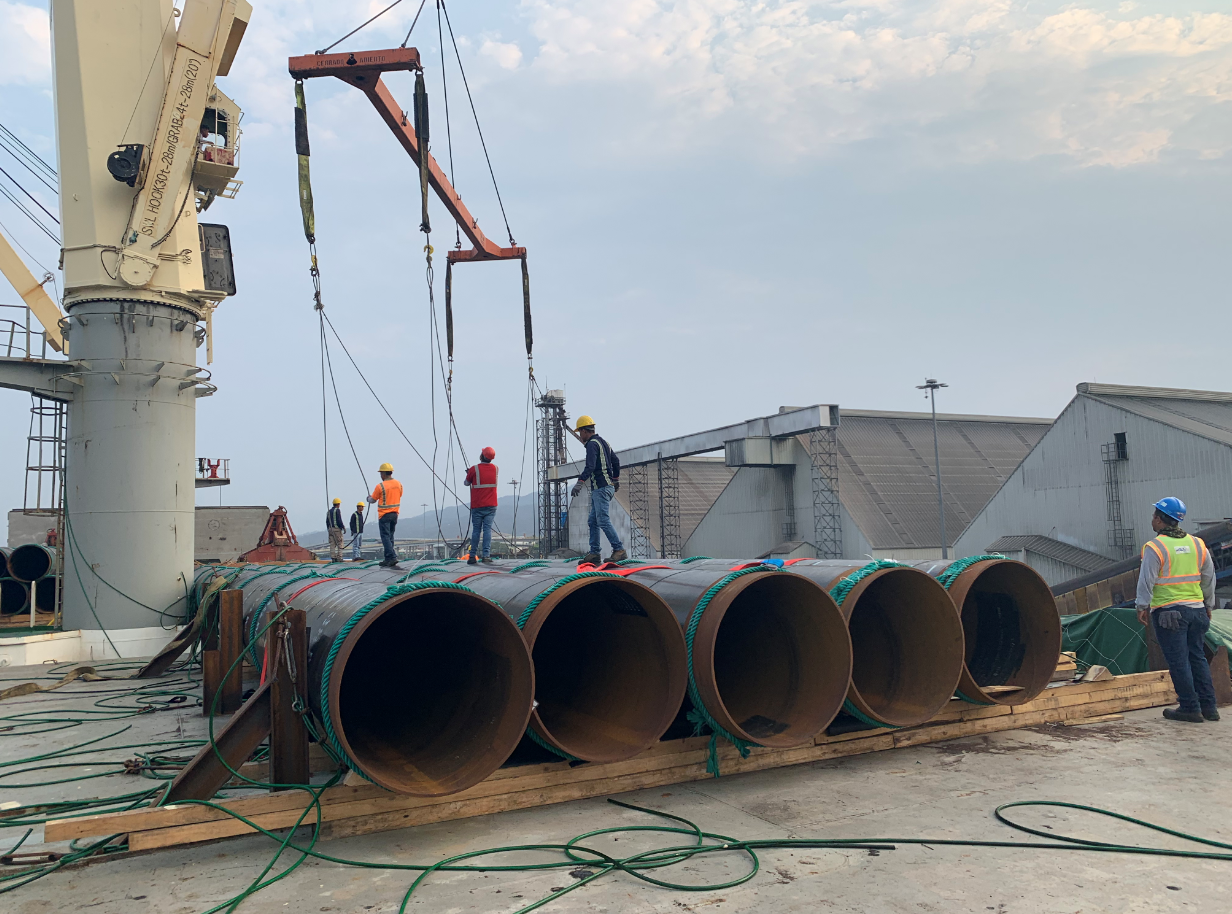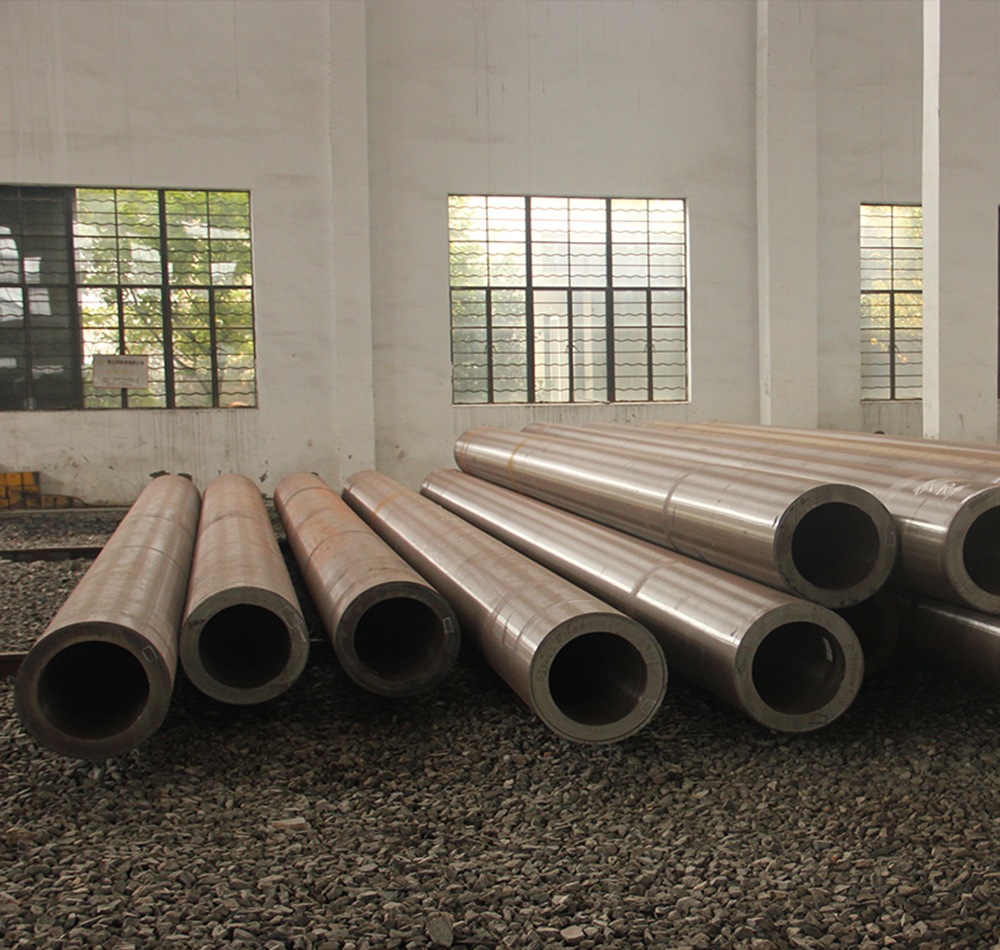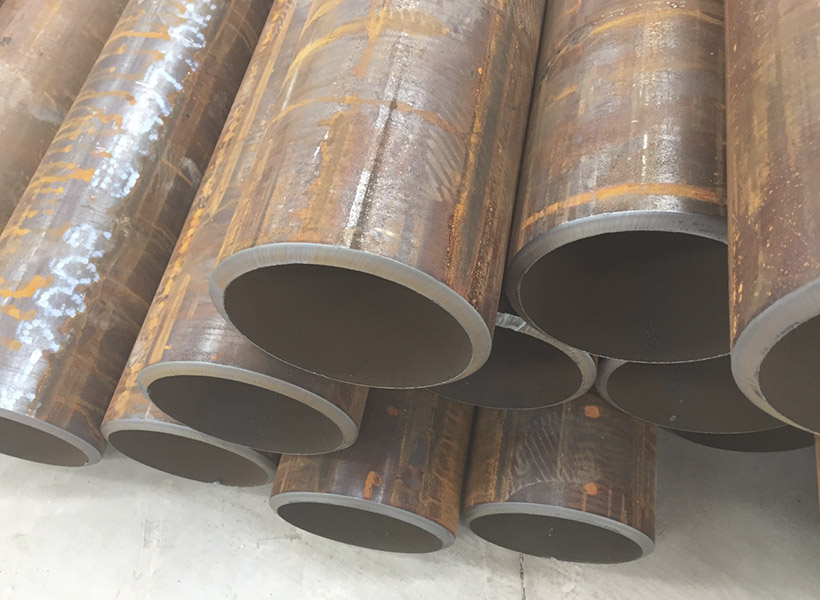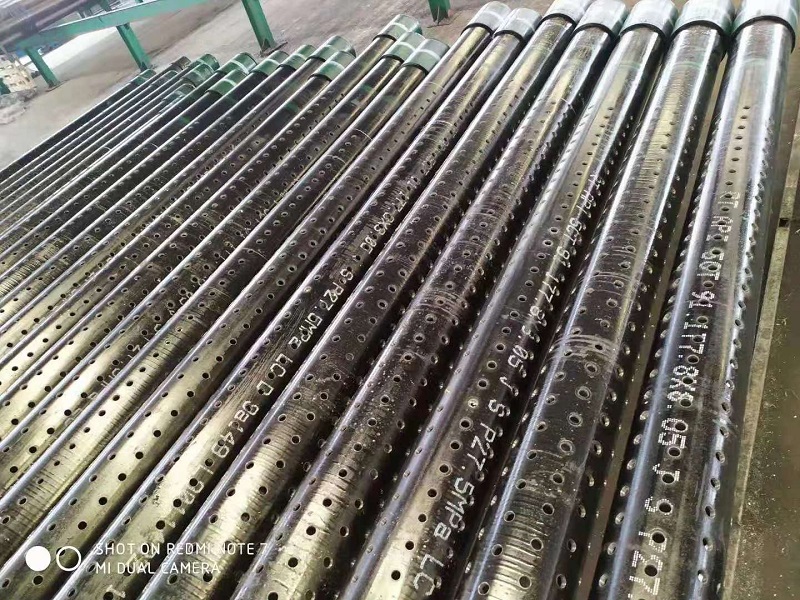Engineering Nuances: The Impact of Cold Forming (EN 10219) on Piling Mechanics
While the primary function of a pipe pile is axial and lateral load transfer, the specific manufacturing method—cold forming, as mandated by EN 10219—introduces unique characteristics and engineering advantages that distinguish these products, particularly the high-strength grades like S420MN and S460MH. Understanding the structural implications of this process is essential for foundation designers utilizing Eurocode principles.
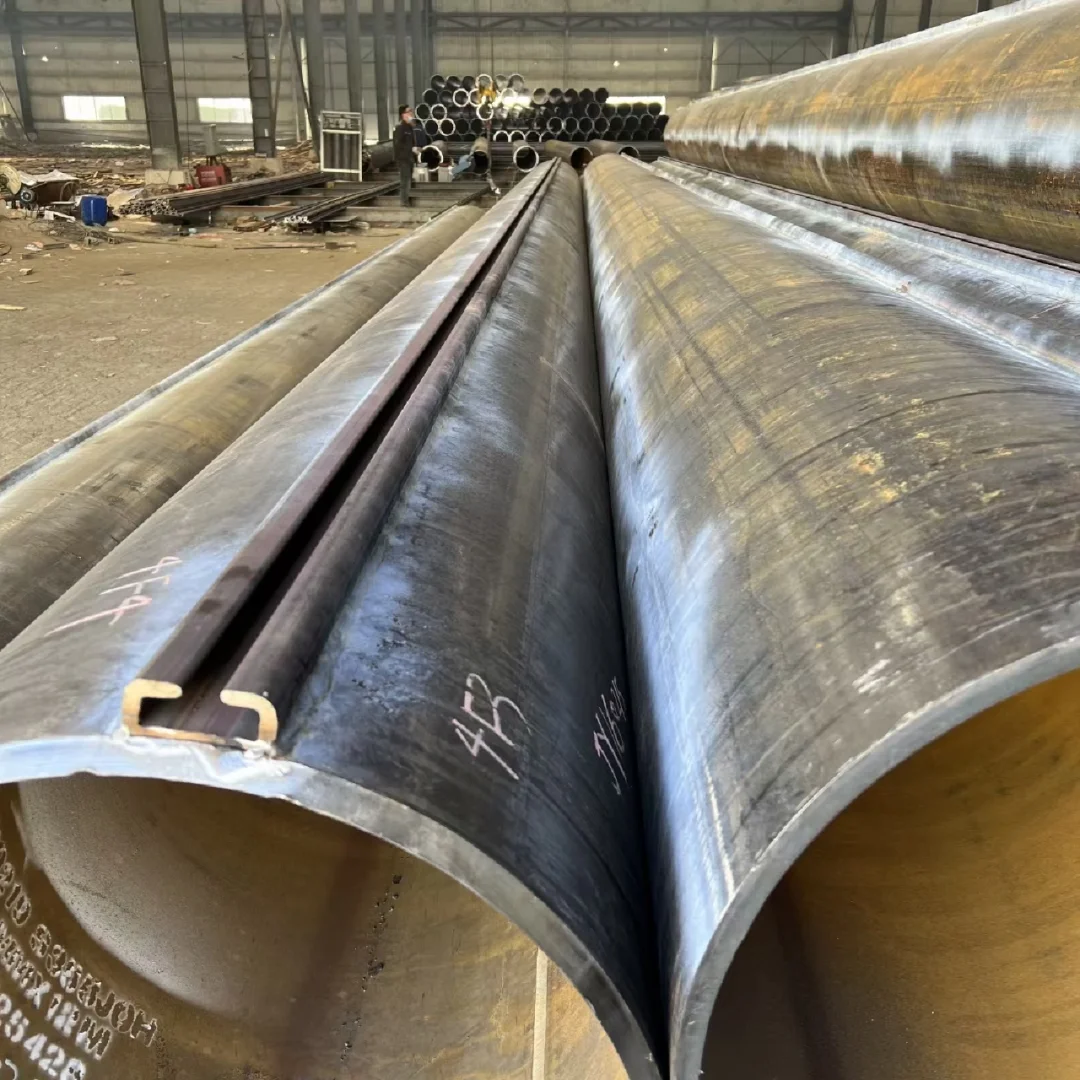
10.1. Residual Stress and Work Hardening
Cold forming involves bending the steel plate at ambient temperature, a process that inherently introduces residual stresses within the finished hollow section. These stresses are complex, involving compression on the inner radius and tension on the outer surface, and they exist even when no external load is applied.
For circular pipe piles used in deep foundations, the effect is primarily felt in the material’s performance under load:
-
- Yield Strength (Bauschinger Effect): While the cold-forming process globally meets the minimum specified yield strength (), the localized residual stresses can slightly influence the initiation of yielding under complex loading conditions (e.g., combined axial and bending loads). However, the high-strength grades (S355 to S460) manufactured through the thermo-mechanical or normalized processes (‘M’ or ‘N’ in the designation) have superior control over these internal stress states, ensuring that the advertised yield strength is consistently available for structural calculations, maintaining integrity during driving.
- Strain Hardening: The cold-forming process imparts work hardening to the steel. This slightly enhances the strength, but more importantly, it results in a finished product with highly predictable elastic and plastic behavior, vital for structures designed against plastic deformation and fatigue under cyclic loading.
10.2. Cold Forming vs. Hot Forming (EN 10219 vs. EN 10210)
It is crucial to differentiate the cold-formed EN 10219 pipe piles from their hot-formed counterparts (). Hot forming eliminates residual stresses and provides material properties uniform throughout the cross-section.
| Feature | EN 10219 (Cold-Formed) | EN 10210 (Hot-Formed) | Piling Implication |
| Residual Stress | High, particularly near welded seams. | Low (relieved during forming). | Requires careful consideration in stability checks and fatigue design. |
| Geometric Precision | Superior dimensional control (, ). | Good, but often higher tolerances. | Excellent for fitting pile shoes, coupling, and ensuring full toe bearing. |
| Material Property Basis | Minimum yield strength () guaranteed for cold condition. | Guaranteed yield strength for hot condition. | Both are structurally sound, but EN 10219 offers better control over the final external profile for field splicing and connections. |
The geometric precision of the cold-formed EN 10219 pipe piles, especially those from S275J0H up to S460MH, is a distinct advantage in large-scale foundation works where precise pile head location and seamless connection to the pile cap are necessary for efficient construction.
11. Advanced Quality Control and Certification: Deep Dive into EN Standards
Our commitment to providing CE Marked pipe piles requires continuous compliance with a matrix of European standards far beyond the chemical and mechanical requirements of EN 10219-1. This advanced quality control system is what elevates the material to a certified foundation element recognized across the global engineering community.
11.1. Non-Destructive Testing (NDT) to ISO Standards
The general requirement for fusion-welded structural components in Europe is guided by specific ISO standards, providing a detailed framework for weld inspection that we rigorously follow. Our NDT methods ensure the integrity of the seam, a non-negotiable requirement for high-stress piling:
- ISO 17635 (General Rules for Fusion Weld Inspection): Defines the overall scope and methodology for inspection, ensuring consistency across all testing procedures.
- ISO 17637 (Visual Inspection): Continuous visual checks of the weld surface profile and geometry are performed to detect surface defects and ensure conformance with dimensional tolerances (EN 10219-2).
- EN ISO 10893 (NDT of Steel Tubes): This series of standards dictates the specific ultrasonic testing procedures. For high-grade structural pipes (like S355 and S460), this mandates 100% automated ultrasonic testing (UT) of the weld seam, capable of detecting linear discontinuities and flaws across the entire wall thickness.
This multi-layered inspection strategy provides absolute confirmation that the structural integrity established by the minimum (e.g., for S460MH) is not compromised by weld defects, guaranteeing reliability during both the punishing driving process and the long service life.
11.2. The Significance of Impact Requirements () for Fatigue
The impact toughness designations () are perhaps the most vital distinction between EN 10219 and many other piling standards. These values, measured in Joules at specified low temperatures, directly relate to the material’s resistance to brittle fracture and its performance under fatigue loading:
- Low-Temperature Operation: For projects in Scandinavian countries, high-altitude regions, or marine environments, specifying S355J2H ( at ) is mandatory. This ensures that the steel, which naturally becomes less ductile at lower temperatures, retains sufficient energy absorption capability to prevent sudden, catastrophic failure.
- Fatigue Resistance: In bridge foundations, railway structures, and offshore wind turbine supports, the piles are subject to millions of cycles of fluctuating load. While specialized fatigue assessments are required, the guaranteed toughness of or steels provides a baseline assurance of material quality that contributes directly to a longer, safer fatigue life by inhibiting the growth of cracks that may initiate from small discontinuities. The controlled, low Carbon Equivalent (CEV) of our high-strength grades further enhances this by ensuring the Heat-Affected Zone (HAZ) of the weld maintains similar toughness to the parent material.
12. Piling Design and Geotechnical Interaction Under Eurocode 7
In the European context, the application of EN 10219 steel pipe piles is governed by the principles of Eurocode 7 (EN 1997), which deals with geotechnical design. The physical properties of our piles—specifically their circular geometry and high strength—are optimally engineered to integrate with these design methodologies.
12.1. Optimized Geotechnical Load Transfer
The circular cross-section of the pipe pile offers specific advantages in transferring load to the soil:
- Predictable Skin Friction: The smooth, consistent surface area of the steel pipe pile allows for highly predictable assessment of skin friction (shaft resistance) as the pile is driven. This resistance, which transfers the load from the pile shaft to the surrounding soil, is the primary load-bearing mechanism in deep, friction piles.
- Toe Bearing Efficiency: Depending on whether the pile is driven open-end or closed-end (with a driving shoe), the end-bearing capacity is maximized. For high-strength piles like S460MH driven to rock, the pile is often driven open-end, then cleaned out and socketted, allowing the high yield strength of the steel to support large concentrated toe loads.
12.2. Utilizing High-Strength in Soil Design
Eurocode 7 utilizes Partial Safety Factors (PSFs) applied to material and resistance parameters. When using high-strength steel grades such as or , the high nominal yield strength (e.g., ) translates into a higher characteristic material resistance (), even after applying the appropriate PSFs. This allows the designer to justify a more efficient foundation design with less steel mass.
The use of our high-grade materials provides the foundation engineer with a highly characterized and reliable product, reducing uncertainty in both geotechnical and structural design calculations, which is a paramount objective of the Eurocode system.
12.3. Logistics, Customization, and Project Delivery
Our expertise ensures that the theoretical advantages of the EN 10219 standard are translated into practical, timely project delivery. This involves:
- Precision Cutting and Preparation: Piles are cut to exact, project-specific lengths with automated systems, minimizing waste and eliminating the need for extensive on-site trimming. End beveling for field welding is performed to precise angles to guarantee the high-quality full-penetration welds required for and continuity.
- Specialized Coatings: We are experts in applying advanced coatings (compliant with ) specifically to the cold-formed surface of the pipe, ensuring maximum adhesion and long-term protection, particularly critical in the demanding marine environment where our piles are often deployed.
- Global Logistics Network: We manage the complex logistics of transporting exceptionally long and heavy structural sections across borders, ensuring that the fully certified, CE-marked product arrives exactly when needed, keeping large-scale infrastructure projects running on schedule and budget.
